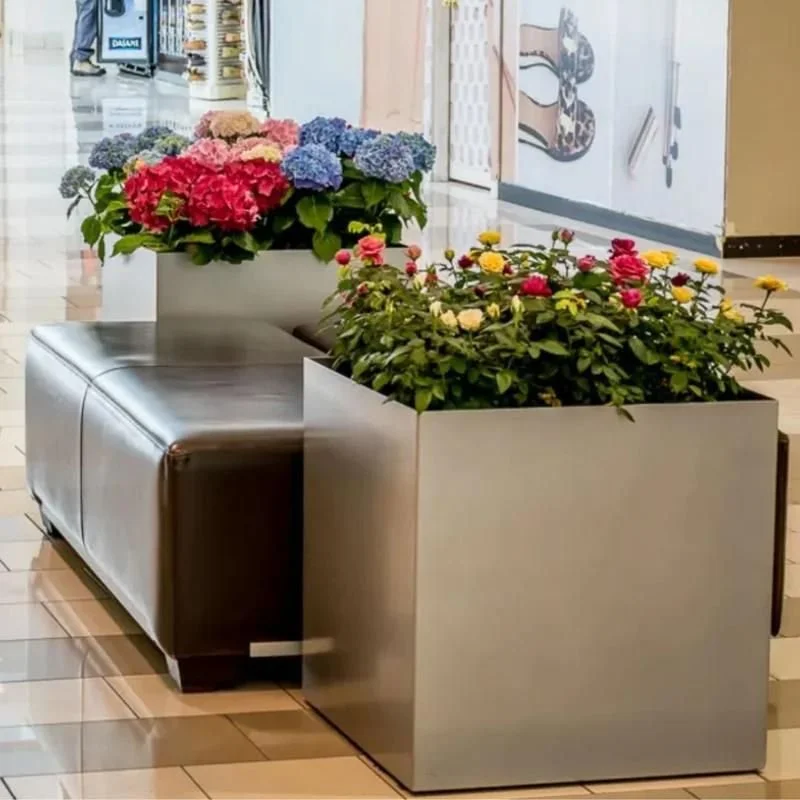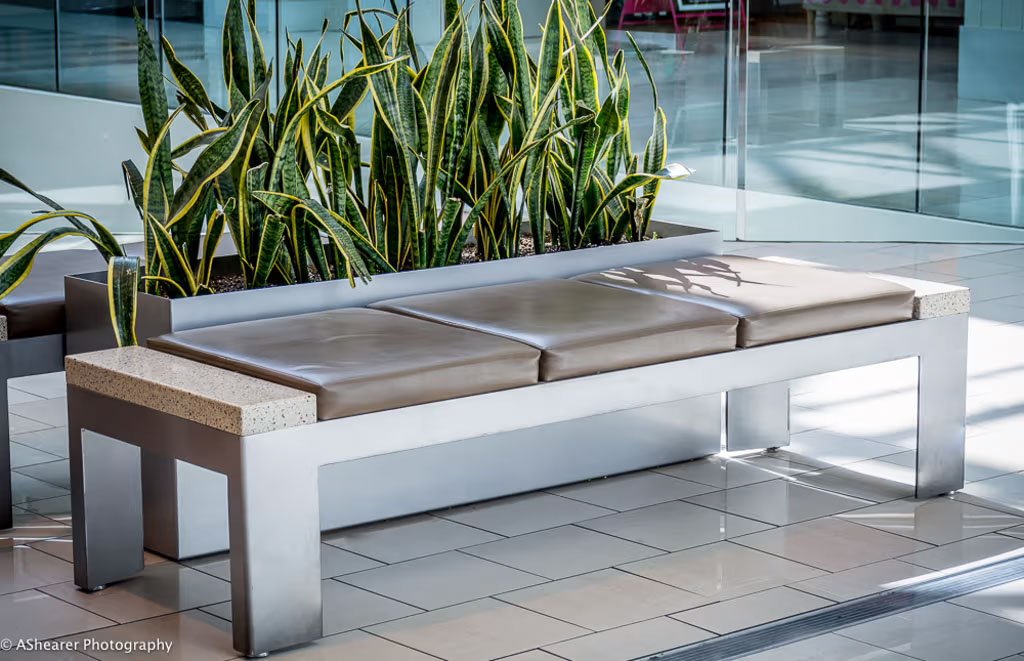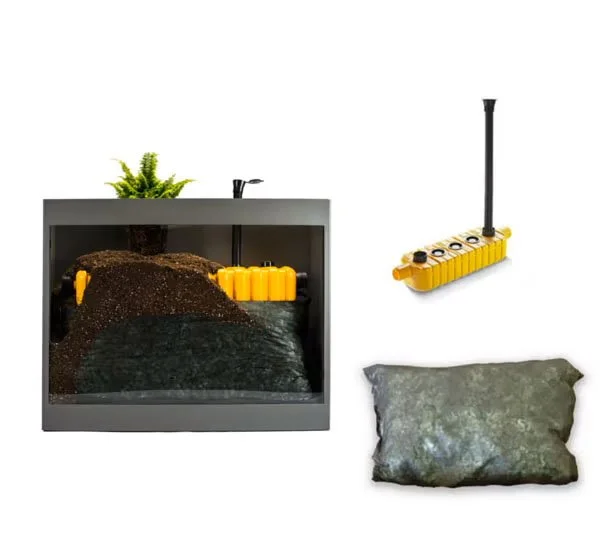4 Reasons to Include Greenery in Indoor and Outdoor Spaces
Adding greenery to indoor and outdoor spaces is something that dates back to 500 BC. However, we are only beginning to understand the scientific benefits that adding plants to indoor and outdoor has on our bodies.
In this article, we delve into some of the benefits of including greenery in your commercial indoor or outdoor space along with the research that shows that plants aren't just pretty — they're good for us too!
Increase Productivity in Indoor Spaces
Highlights:
- Plant Areca Palm, Lady Palm, Bamboo Palm, Rubber Plant, and Dracaena “Janet Craig” in your pot or planters.
- Professor Dr. Tove Fjeld recommends that all buildings should have at least one large plant for every two employees.
- Dr. B.C. Wolverton recommends keeping a plant on every desk.
We maintain a predominantly indoor existence that includes a progression from our bedrooms to the kitchen, commute to work and then in reverse order each night. This type of routine equates to more than half of our time spent indoors which can increase our chances of being exposed to indoor air quality issues that affect our overall health.
The quality of air indoors can be compromised by the pollutants that furnishings and equipment give off, the uncontrolled humidity levels and how well the ventilation system is functioning.
Fortunately, architects and builders are designing new and remodeled buildings that are healthier to work in because of the use of low-emission products, and increased ventilation as well as successful maintenance schedules.
Unfortunately, we don’t all work in these well thought out environments and changing them can be costly. If you are working in a building that is causing you to have building associated illness or potentially could, one quick and easy way to combat this problem is by increasing the use of greenery.
Greenery is found to clean air particulate matter such as molds, bacteria, and toxic agents. Greenery also reduces excess C02 and increases humidity. The data collected by NASA, the PCAC and Wolverton Environmental Services, Dr. Ronald Wood, Professor Dr. Tove Fjeld, Professor Virginia I. Lohr, Professor Dr. Margaret Burchett, and many others confirm that plants are in fact an essential part of creating an indoor working space that is healthy and has been shown to increase productivity and decrease the number of sick days.
Using plants to improve indoor air quality all started in 1980 when NASA performed a clean air study—not for us earth dwellers—but moon dwellers. NASA needed a way to get rid of waste and clean the recycled air.
Using sealed test chambers; they concluded that plants could remove formaldehyde. Associated Landscape Contractors of America (ALCA) were encouraged by NASA’s findings and helped fund a study to test 12 houseplants and their performance.
The ALCA found that adding more greenery can increase not only the humidity in our spaces but also remove toxins. A few of the toxic culprits are benzene, formaldehyde, ammonia, and bio-effluents, which are found in electronics, flooring, cleaning products, office furniture, décor and the people inhabiting the space.
Even after completing the NASA Clean Air Study, Plants for Clean Air Council (PCAC) and Wolverton Environmental Services have continued to study the effects of plants in our indoor environments.
Their findings have been summarized in Dr. B.C. Wolverton's book “How to Grow Fresh Air.” Wolverton indicated the top indoor plant performers based on a rating composed of how well the plant removes volatile organic compounds (VOCs), how easy they are to grow and maintain, how resistance they are to pests, and how fast they turn the water into vapor.
Based on all the results of the research completed by NASA, PCAC, and Wolverton Environmental Services the Areca Palm, Lady Palm, Bamboo Palm, Rubber Plant, and Dracaena “Janet Craig” were the top performers.
Professor Dr. Tove Fjeld has further recommended that buildings should have at least one large plant for every two employees, and Dr. B.C. Wolverton recommends keeping a plant on every desk. Adding greenery is an important choice for any new build or remodel, and the benefits are encouraging enough to be supported by the C-Level.
Functional Space
Highlights:
- Use greenery to divide areas into private sitting areas.
- Divide expansive, high-ceiled rooms with living walls.
- Turn expensive underutilized site furnishings into popular reflection and resting spots.
Large open spaces such as cafeterias and conference rooms can make employees and clients feel lost, but permanent dividers or accordion walls can be costly and just create another drastically uninteresting wall.
Instead, use foliage to create immediate spaces that feel cozy and not like a vast open vista that quite frankly will shy away even the most confident individual.
Long wide hallways between offices can also be potential spaces to create small private meeting spots for groups to meet before meetings. These spaces can be used for employees to brainstorm ideas, prepare for a meeting or for private conversations with their clients.
Creating private areas is especially important in smaller offices where space is limited and creating more private spaces is crucial for office moral.
Large open outdoor spaces are also important to segregate. Dividing outdoor spaces can increase the likely-hood of people utilizing those areas.
Do you see those benches that are never used? They are usually in the vast open space. However, a grouping of trees or plants around a lonely bench can make the space more appealing and therefore make the area a sought-after spot for lunch or the perfect place for a last-minute review before a big meeting.
Friendly to Environment
Highlights:
- Gregory A. Norris, Ph.D. suggests focusing on our environmental "handprint."
- Use plant sippers to decrease the amount of water needed.
- Change impervious rooftops to sky-high oasis.
We love our Earth and plan on living here for a long time. However, it can seem daunting to think about everything we are doing that attributes to the demise of Earth. Instead of thinking about your carbon footprint, focus on your environmental “handprint” (an idea formalized by Gregory A. Norris, Ph.D. from Harvard). A great way to start living an eco-friendly life is by making decisions and focusing on how you can help Earth instead of focusing on the mess we are creating.
One way you can increase your environmental “handprint” is to use plant sippers.
These plant-watering systems use capillary action to feed plants at the roots and reduce water waste. This will especially help plants in containers without drain holes. Keeping the water away from the soil and plant will prevent its demise.
Adding greenery to a space at first can seem overwhelming due to the work that will go into watering and maintaining plants, but with Ollie Plant Sippers your watering regime will be significantly reduced.
Fertilizing is also easy because the fertilizer can be added directly to the container and then goes directly to the roots where it is most needed.
Greenery will also increase your handprint if it is used to transform areas such as infrequently used patios and rooftops to reduce runoff by absorbing rain and could be used to create garden spaces.
Aesthetically Pleasing
Highlights:
- Create a "community attachment" to retain residents and employees.
- Stellar first impression.
- Competitive advantage with a sought-after new hire.
The draw to your business or commercial project for prospective clients will be the healthy, aesthetically pleasing environment that they will experience. We all understand the importance of the attachment that is created between a caregiver and a baby but did you know this can also play a part in the retention of clients?
Entomologist E.O. Wilson says, “Nature holds the key to our aesthetic, intellectual cognitive and even spiritual satisfaction.”
A survey done by Gallup of 26 communities where the Knight Foundation, a non-profit foundation that empowers communities, is active was conducted over three years and completed in 2010.
The surveyors of the study found that the top three aspects of a community that retains their residents are attributed to the area’s physical beauty, opportunities for socializing, and the community’s openness to people.
These three aspects of a community are important for individuals to create what is called a community attachment. At the end of the day, your business is a community and to retain your current employees and clients, the aesthetics of the inside and outside of your business need to be beautiful, which can be achieved with added greenery.
Shop our commercial planters and take advantage of the benefits of greenery in your commercial space.










